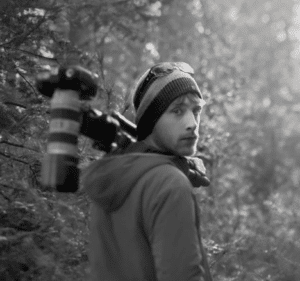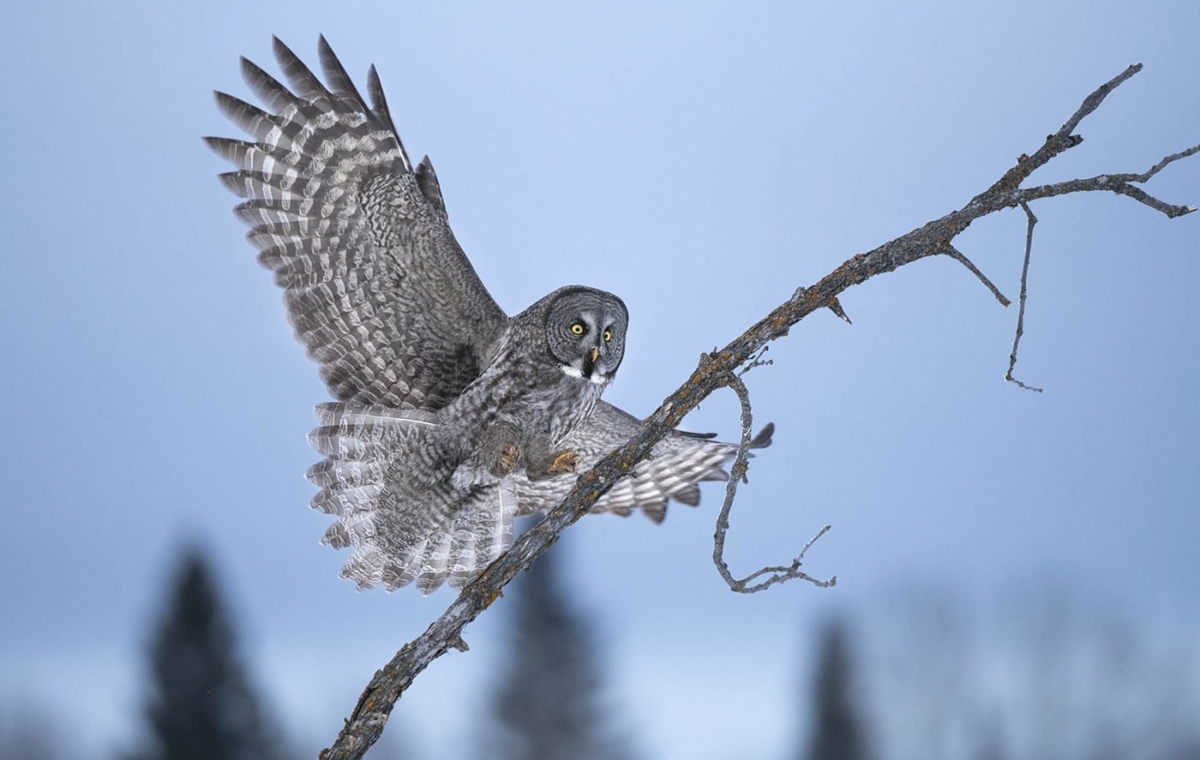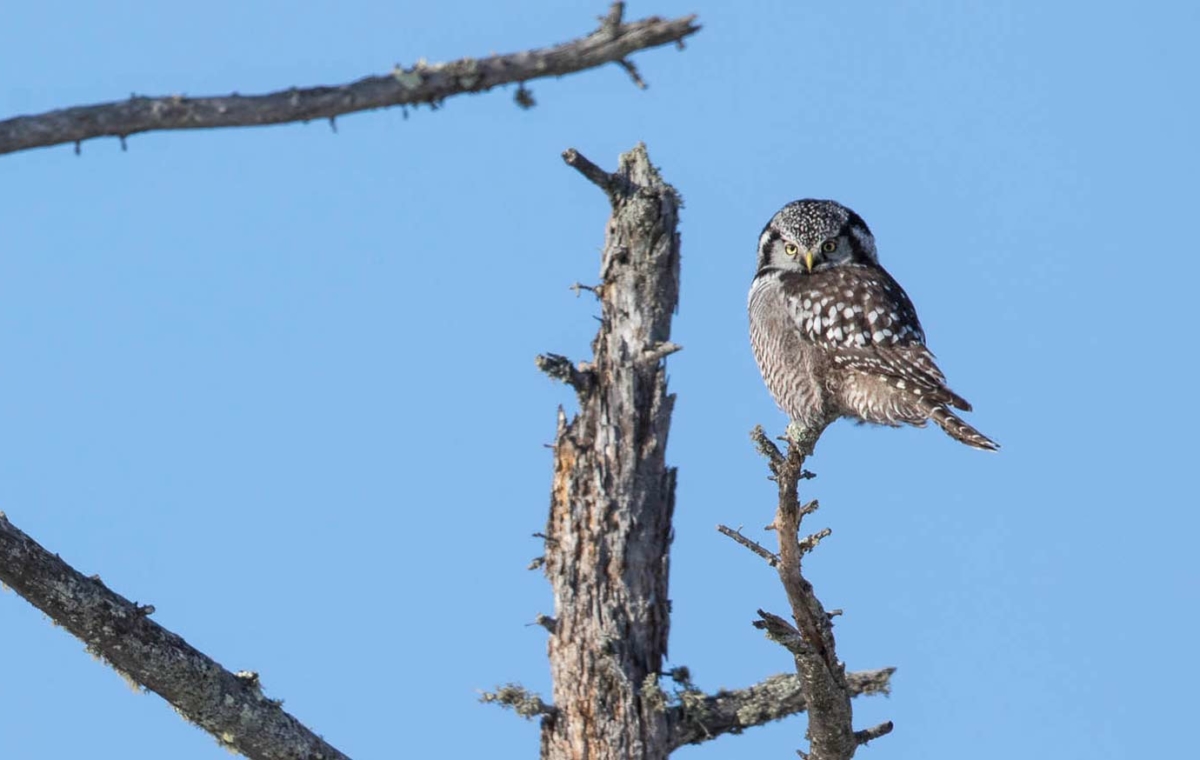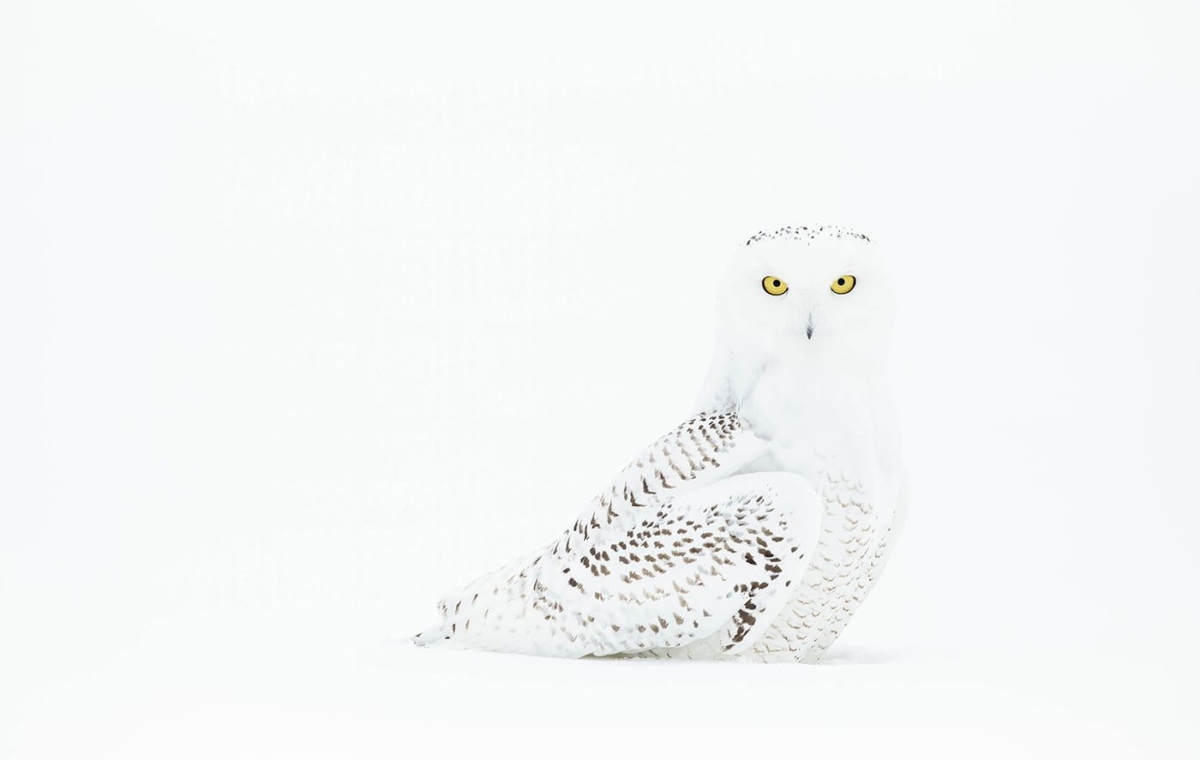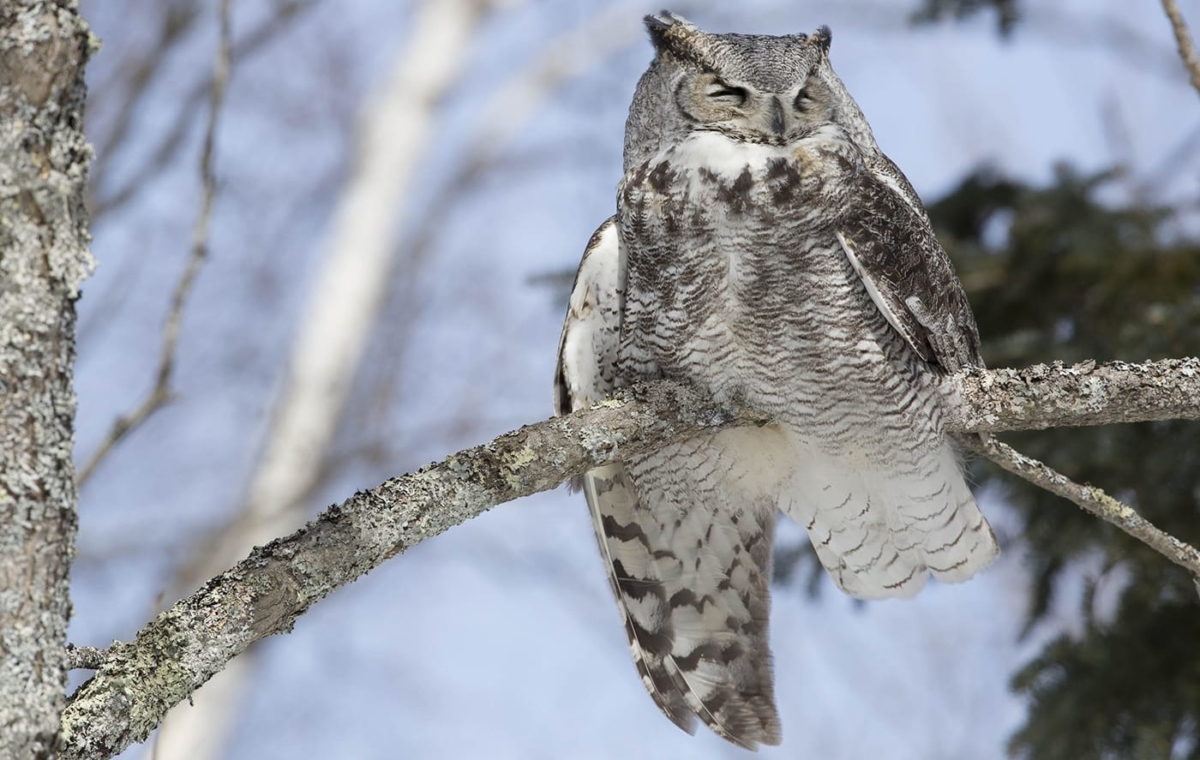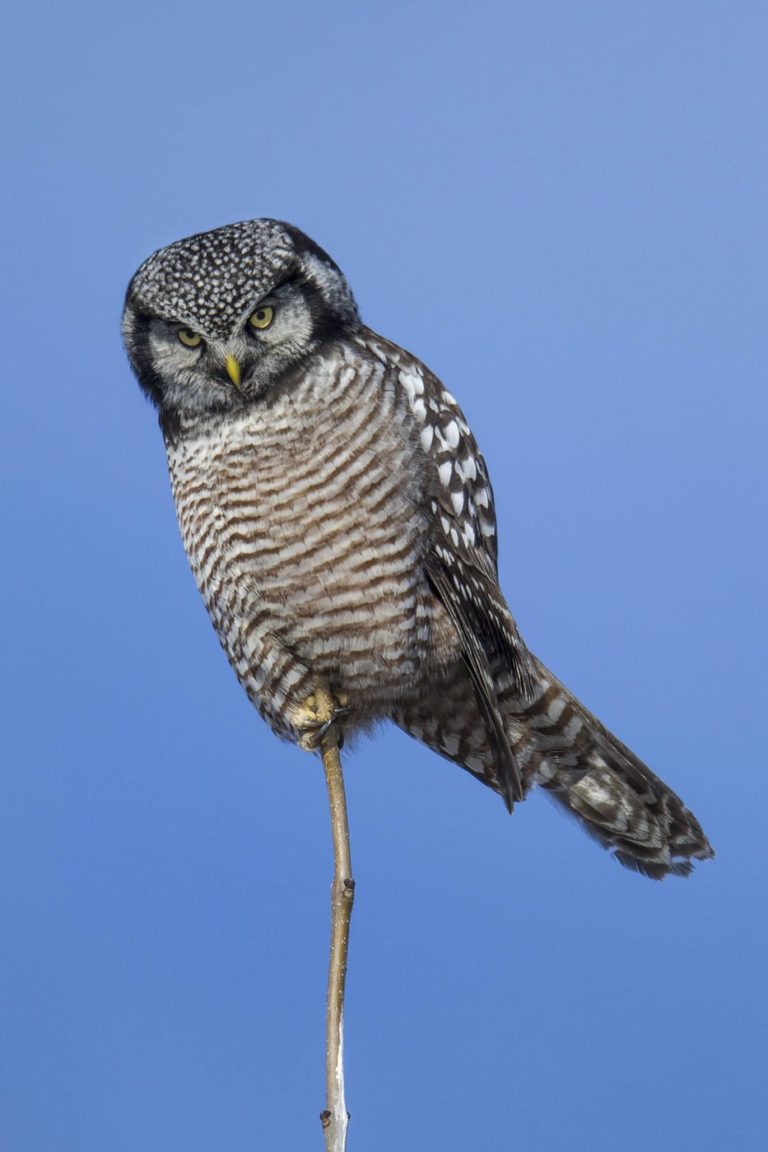
An Obsession with Owls
Photo essay by Ben Olson
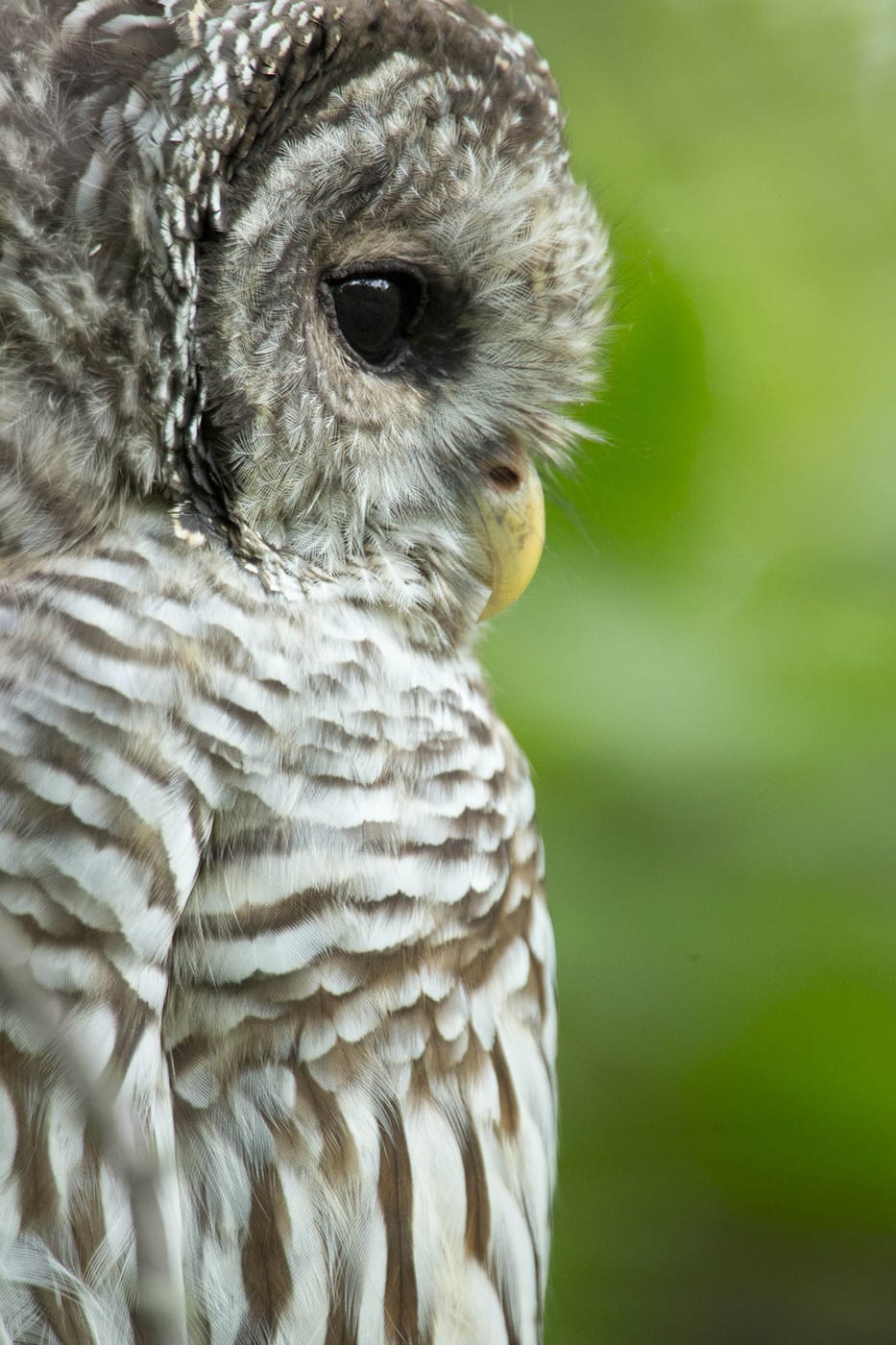
Like many others, my obsession with owls runs deep. What is not to like? Their beauty is unmatched, as is their elegance and enchanting disposition. While having spent countless hours in the company of these birds of prey, I am always impressed by their ability of silent flight and mastery of camouflage. Boreal forests host an array of different owl species, some relatively common, others rare, and a single transient species that is highly coveted.
Of all of the owl species present in the northwoods, the Barred Owl is one of the most common and highly adaptable in the region. They’re larger owls found in both deciduous and coniferous forests, often near water. Look for them in mature forests, as they require cavities for nesting. Their iconic call, “who cooks for you,” is unmistakable and resonates loudly through the forests. Some of my most memorable owl encounters are with this species. I’ve been woken in the Boundary Waters Canoe Area Wilderness as one called directly over my tent and heard them while paddling at sunset. Without a doubt, my favorite encounter was when two fledglings followed my wife and I through a forest at dusk, calling out loudly in the silence of the night.

My favorite owl species to photograph, and possibly the most iconic is the Great Gray Owl. This bird is striking in size, beauty and grace. Their haunting yellow eyes, white bow-tie and impressive stature leave one in awe, even myself, after spending hundreds of hours with these giants. At up to 30” tall, they’re the tallest of all owl species, yet they only weigh in at 2.5lbs, allowing them to balance on the most delicate perches. Dense evergreen forests are where you can find them, often using broken tree boles for nesting. Recently, I had the opportunity to witness five different great grays hunt a meadow over multiple days. Watching them effortlessly dive through the snow to capture voles is an acrobatic feat!

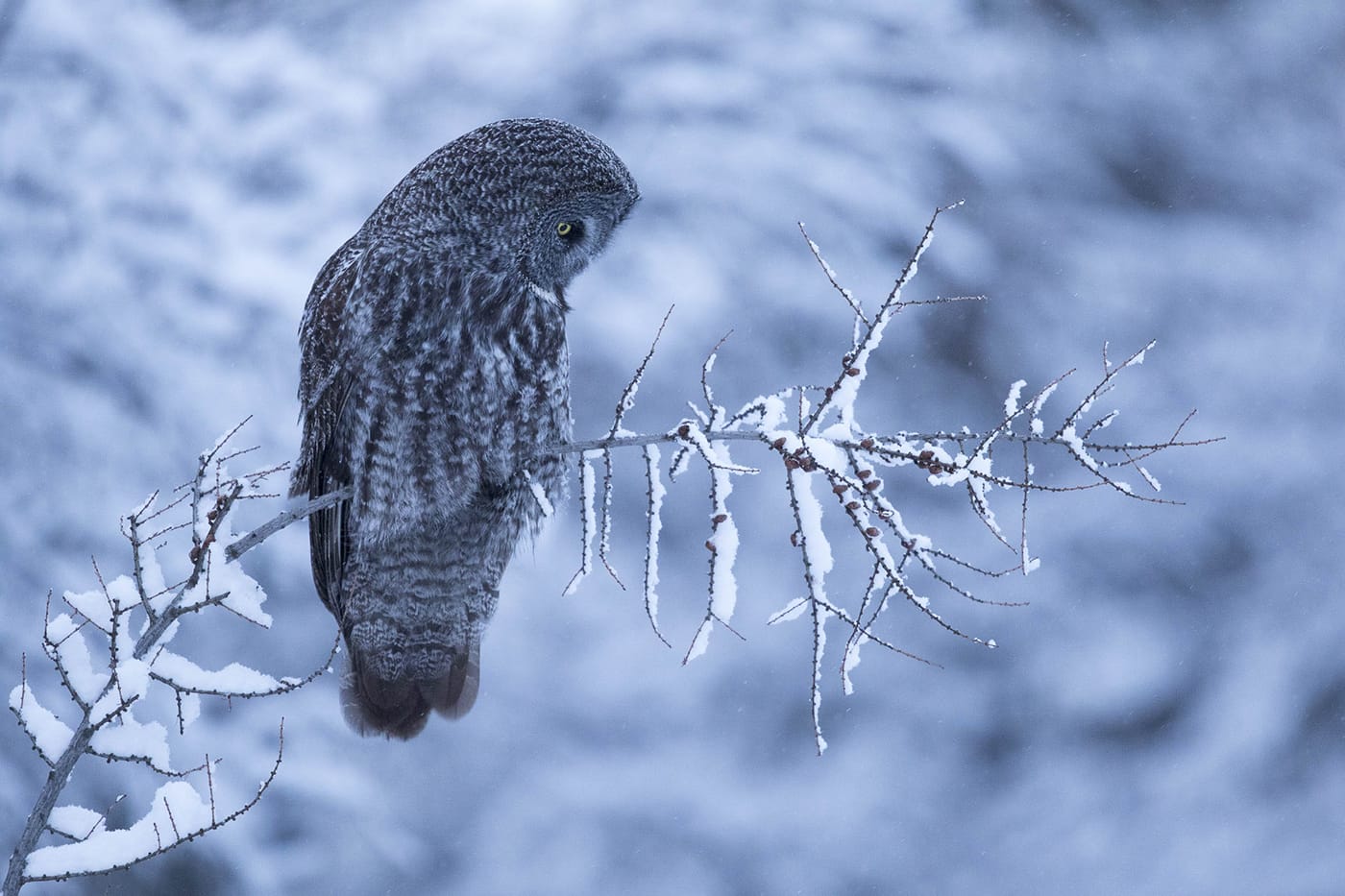
A fairly common species, but one that had eluded me time and time again, is the Great Horned Owl. This is another large owl with a diverse diet. They have been known to hunt anything from mice to rabbits to other owls. They’re usually nocturnal hunters, so finding them during daylight hours can be difficult. They can be found in a wide array of habitats, so listen for their call – a deep, soft hoot. While I have had some success with these birds, I have found them sensitive to my presence, especially during daylight hours while they’re roosting. I avoid seeking them out for this purpose. My most significant encounter was with an individual with an injured wing. Upon discovering the owl, it was perched incredibly low to the ground during broad daylight. An attempt was made to capture the owl for rehabilitation, but it was fit enough to fly to a high perch, and ultimately the rescue had to be called off.
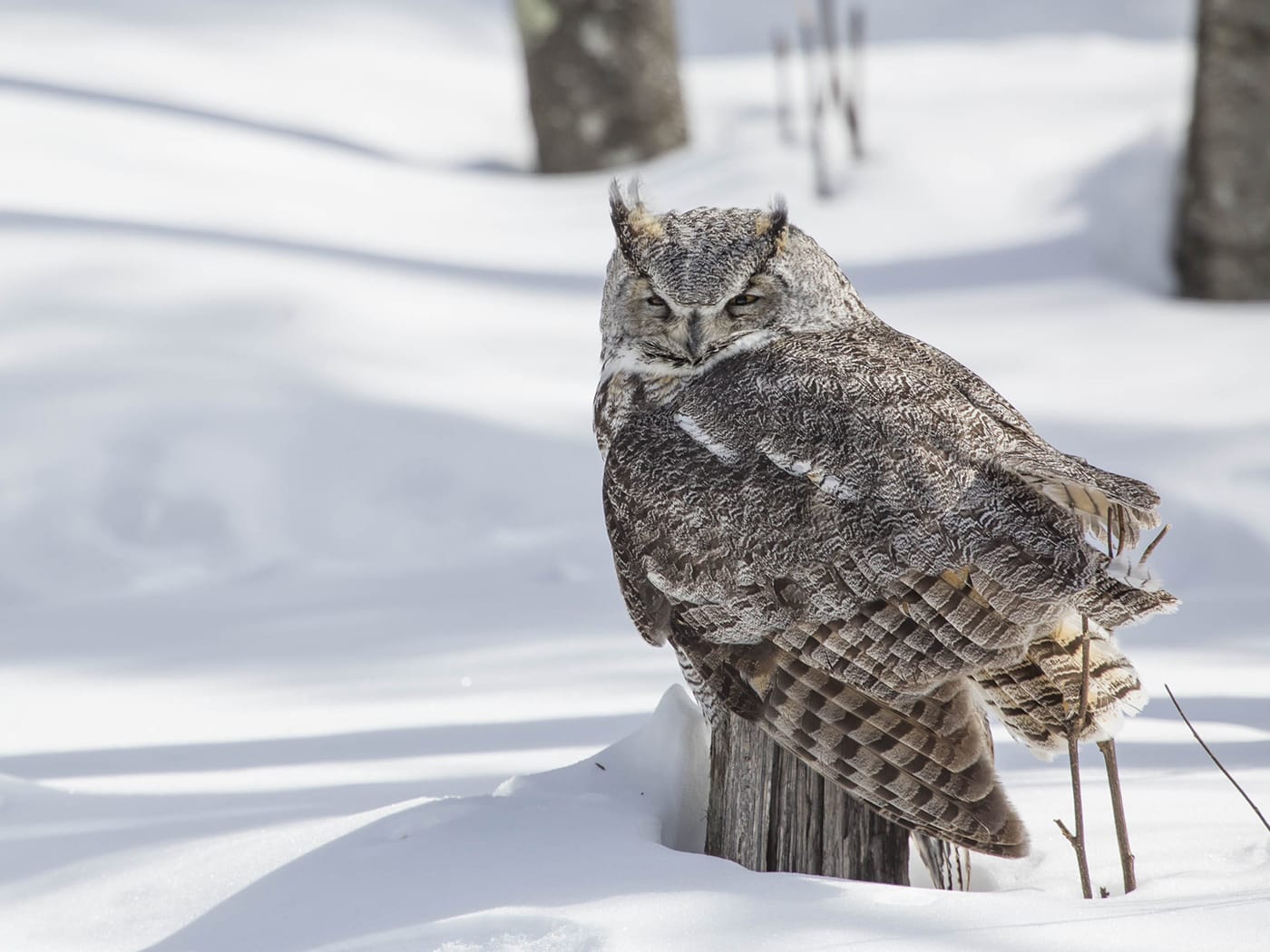
Another fan favorite is the Northern Hawk Owl. This uncommon, medium-sized owl is identified by piercing yellow eyes, white face framed by a dark border, and horizontal banding along the length of the abdomen. You can find these speedy birds hunting high up on treetops in open coniferous or mixed forests. They hunt by listening and sight, looking for rodents and birds. Undoubtedly these birds are incredibly alluring, and what I find most remarkable about this species is their speed and agility. Unfortunately, their smaller stature and tendency to perch on high treetops can make them frustrating subjects to photograph!
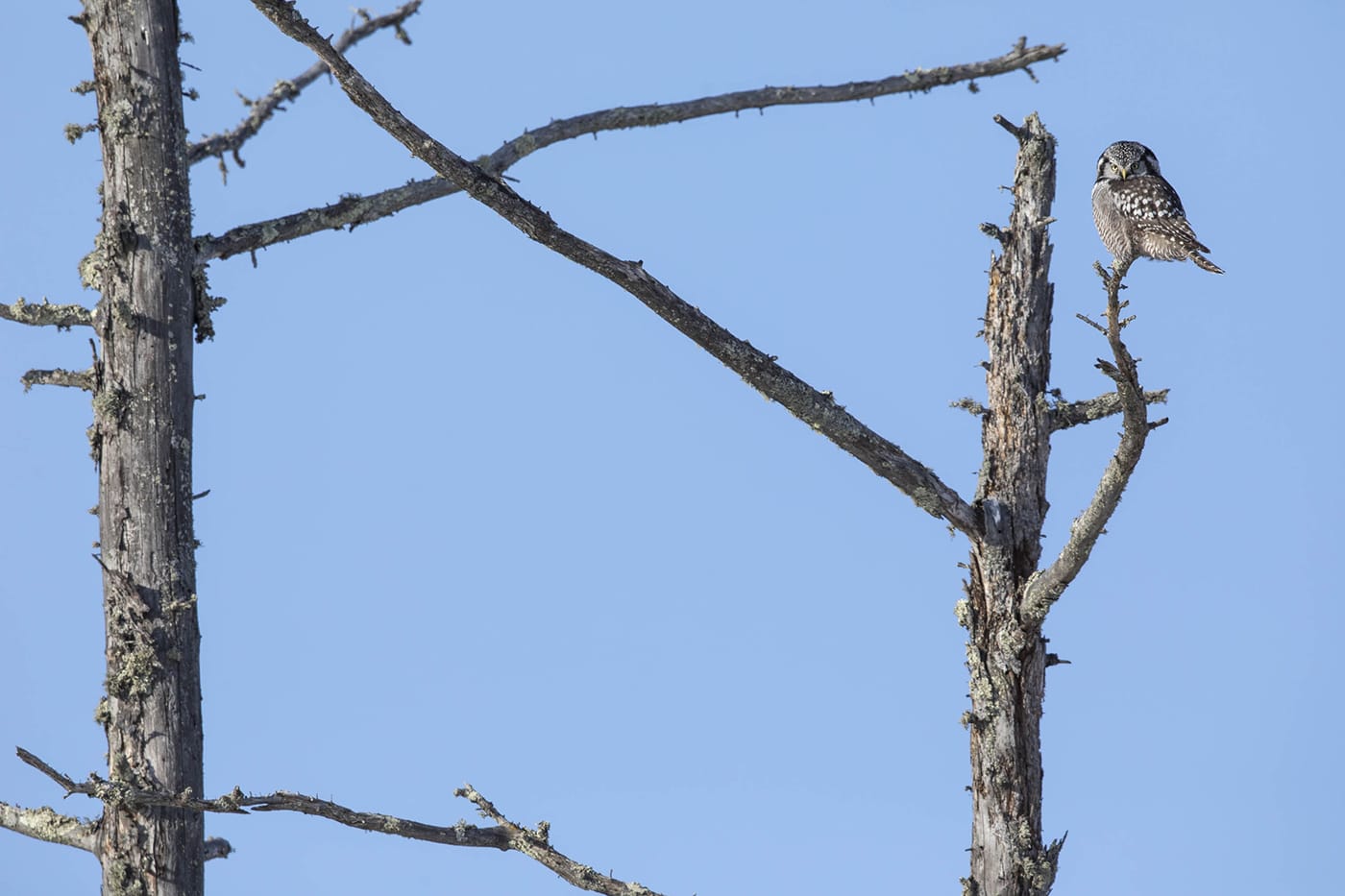
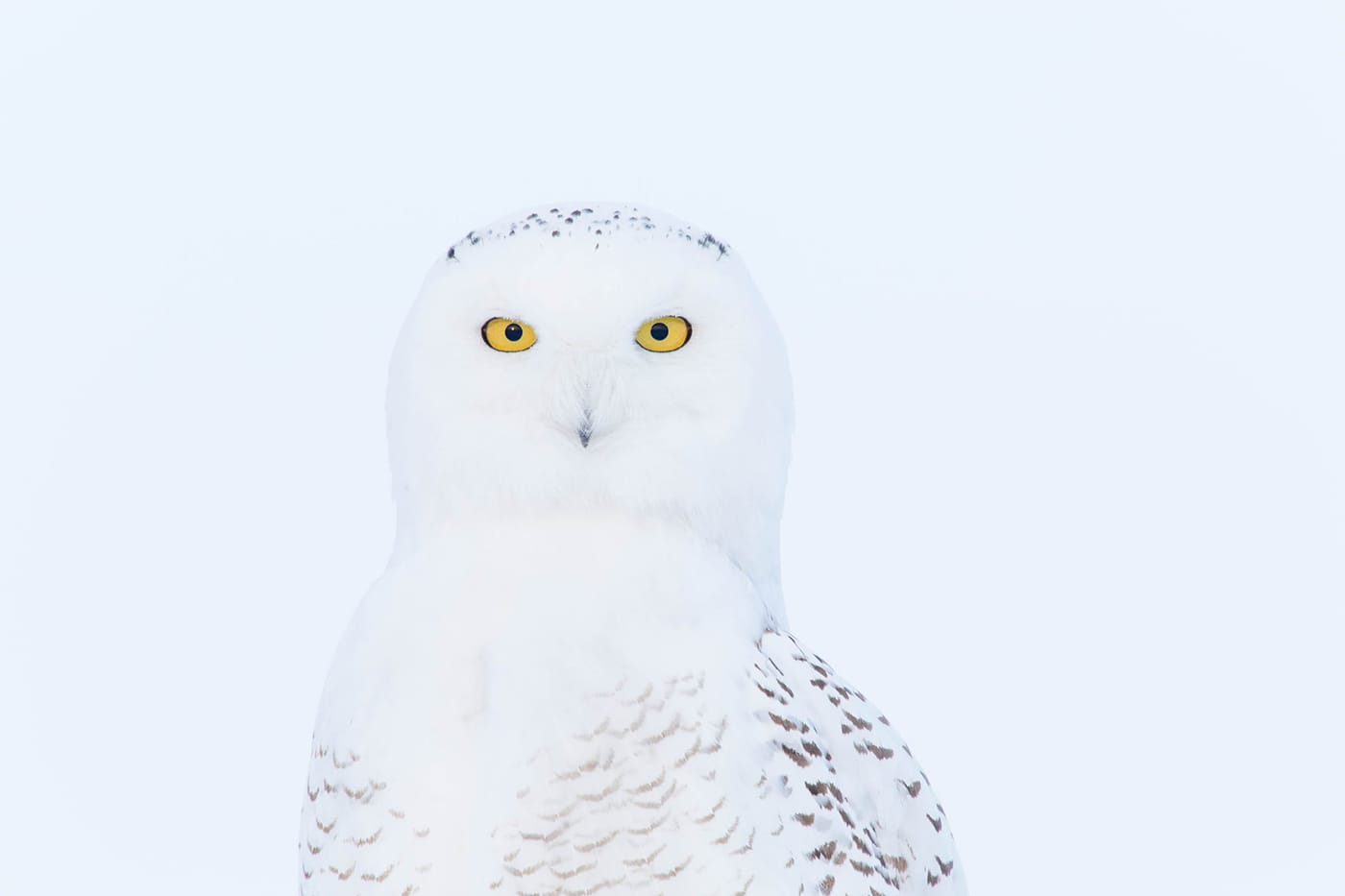
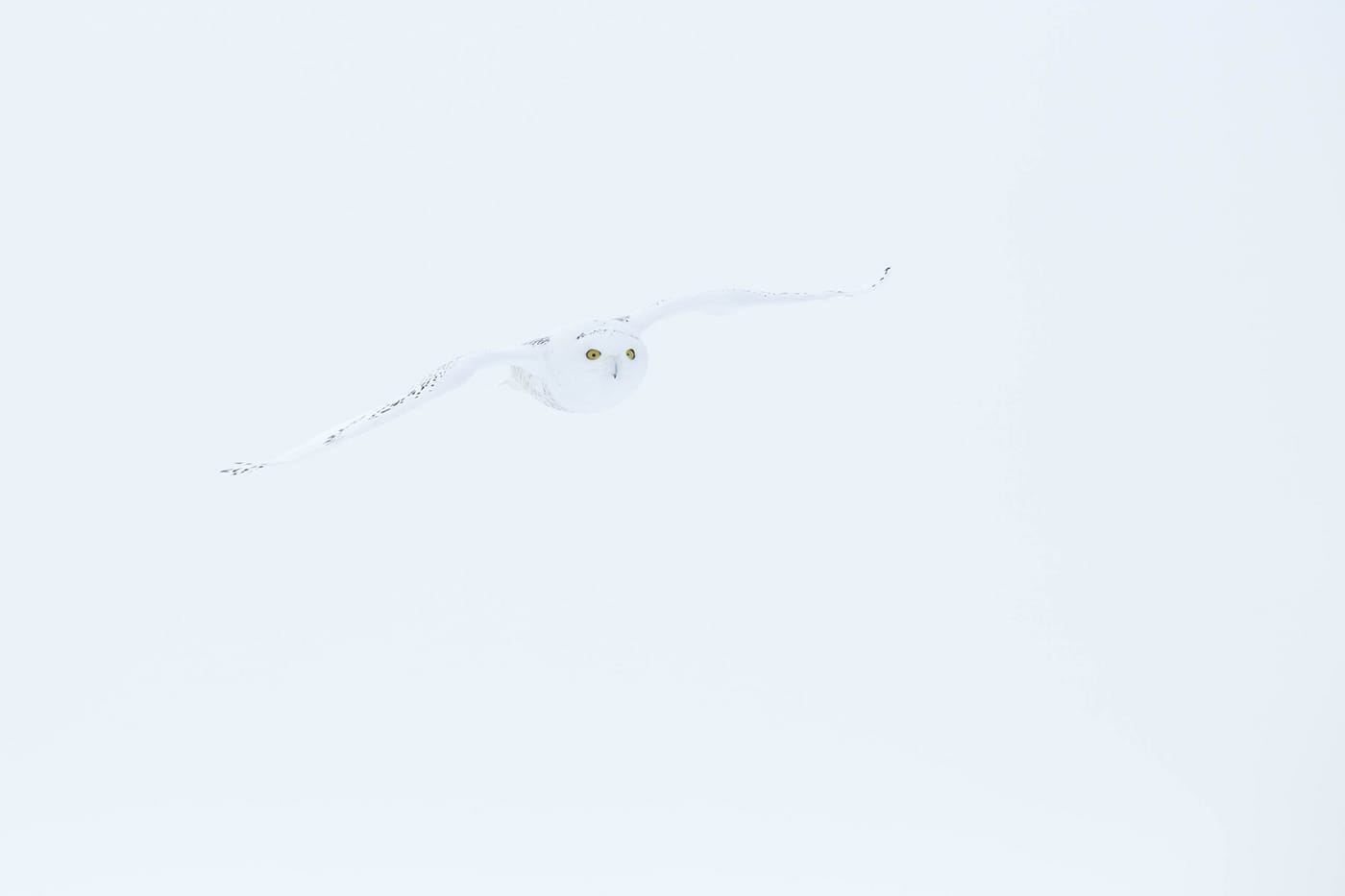
Lastly, is the Snowy Owl. While this species makes its home in the arctic, they do migrate south and can be found in open meadows and bogs found in the boreal forests. This owl is undoubtedly the holy grail for many, and it is obvious why. Males will be pure white with minimal to no barring, while females will have barring throughout, and juveniles will be heavily barred. They are a large owl, weighing up to 6 pounds and an almost 5-foot wingspan. Unlike most owls, this species require large open spaces to hunt and will routinely hunt from the ground, making spotting them difficult. I have been fortunate to spend a considerable amount of time with this species, often spending hours with them waiting for them to hunt only to have them stay in the same location. Every once in a while, I would have the privilege to watch them hunt, and a few times, they even allowed me to witness them up-close and personal.
These are just a few of the owls that can be found in boreal forests, and chances are they are closer than you know. The best advice I can give is to learn about the habitat for each species, general behavior and the different calls each owl makes. That, along with spending time in the forests – will result in owls – and an unhealthy addiction, I guarantee it!
All of the owls and wildlife I photograph are wild animals documented without the use of bait, scent lures, or playback calls.
